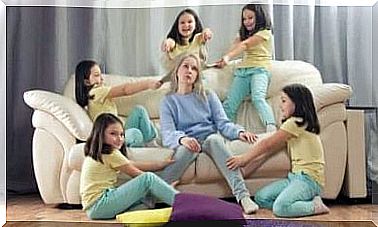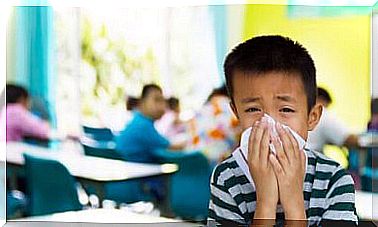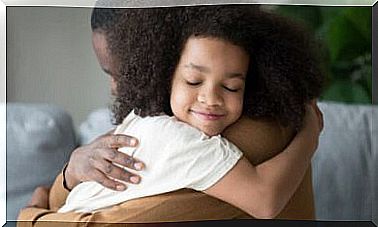Emotional Communication In Childhood – Being Parents
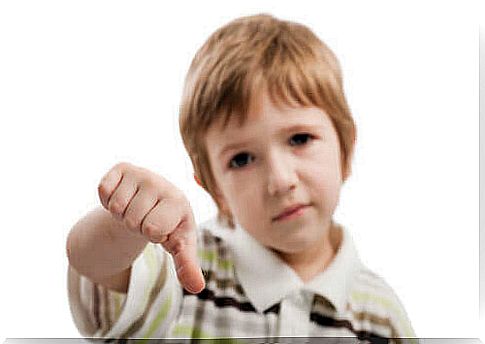
Emotions are an essential part of the person. Communicating them effectively is as important as recognizing those of others. It serves our personal well-being and builds good relationships with our peers. Thus, emotional communication in childhood is a tool that must be properly employed.
Communication is the act of transmitting a message to a receiver through a channel – written or spoken – in a context and with a specific purpose. We say that there are two types of communication:
- Verbal communication. The message is self-explanatory. It seeks to transmit information to the receiver through speech or writing.
- Non-verbal communication. It can complement verbal communication. It includes movements, signs and facial and bodily expressions.
Nevertheless, we could add a third: emotional communication. It is the one who tries to convey the feelings and emotions of the sender. It could be a phrase, a smile, crying, or an angry cry.
So, saying “thank you very much” to someone is not the same as this same message accompanied by a hug from our mother. Emotion makes the message stronger. It transcends in time and therefore, it lasts longer in the memory of the other.
Emotional communication in childhood: benefits of their integration
Children have a lot to work on when it comes to their emotions. Guided by their parents and teachers, it is very important that they know how to recognize them, manage them and express them in a positive and constructive way.
This will allow them to know themselves, better face conflicting or frustrating situations. In addition, the proper control of emotions makes children develop a more stable, resilient and optimistic mind .
Emotional communication is a very useful tool for managing emotions and feelings. How to do ? Here are the most important channels to get there.
- Dialogue. They should be taught that their parents are available to them if needed. They will be able to unload themselves and seek a solution, if they feel negative emotions. They will thus work on the expression of their emotions.
- Actions. Nothing is more effective than a hug or a kiss to show affection for the other. Likewise, body posture or assertive gaze can reinforce a posture of refusal or consent to something.
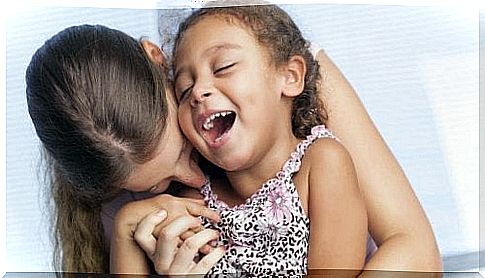
Other benefits of emotional communication in childhood
Besides what we have explained, listening to others and understanding what they are expressing is also an act that includes emotional communication. This will allow us to interpret the feelings of others, act on them and develop empathy, a basic quality throughout life.
Physical contact is also one of the central points. It involves crossing a barrier of personal space, which can only be done with the closest people.
Physical contact, properly applied, is a much more effective weapon than any other verbal or non-verbal message. A caress, a hug or a kiss represents one of the highest ranks of closeness between two people.
Finally, we can cite the subjective perspective. This is nothing more than the use of certain expressions to add emotional content to our messages. Thus, we will not interpret our sentence as an absolute and irrevocable truth but as the result of our emotions.
I believe, I think, I feel and I give my opinion. If we communicate something in this form, the receiver will be much more empathetic with us. The debate will take a positive turn. This is something very useful in friendly or fraternal relations, for example. Indeed, there are often different postures.

How to practice emotional communication in childhood?
There are many ways to work on this aspect in children. They will thus know how to communicate what they experience, feel and desire. Here are a few :
- Activities. There are many exercises and dynamics to strengthen emotional intelligence. The latter includes emotional communication. In this article, you will be able to find some very valuable dynamics.
- Books. There are many publications by specialists on the subject, such as Daniel Goleman, aimed at children and mothers alike. There you will find questions and strategies to improve emotional communication in your children. Here is an exceptional list of options for you to consider. There are also audiovisual resources.
- Example. There is no better tool for instilling attitude in children. So if you show him that you are expressing how you feel and think, he probably will too. Also try to implant the use of subjective perspective. Work on verbal and non-verbal communication and spread positive emotions. Using emotional verbs like to delight, love, hate, fear, or worry, among others, will be very helpful.
Remember, emotional communication in childhood is very important. That’s why it deserves your time and space. You will give your child a tool for life. His attitudes, assertiveness and empathy will thank you in the future.

